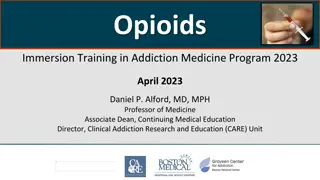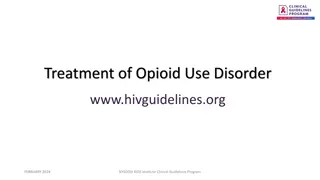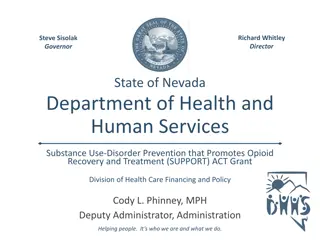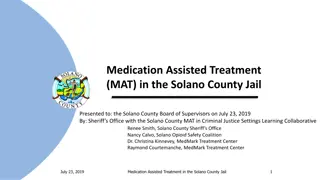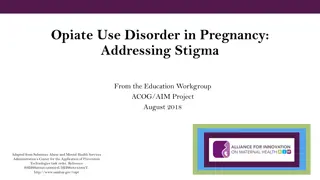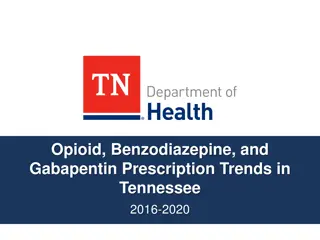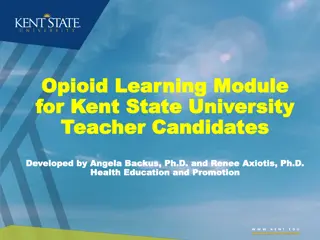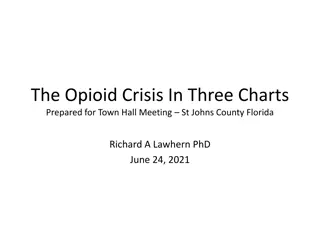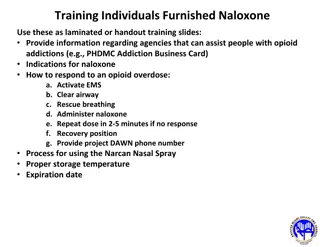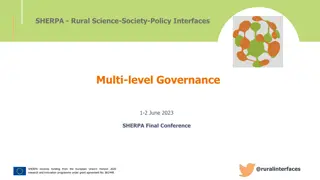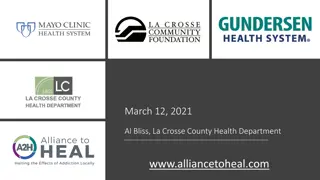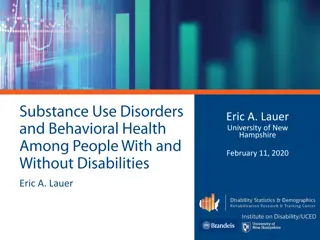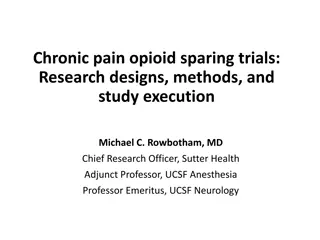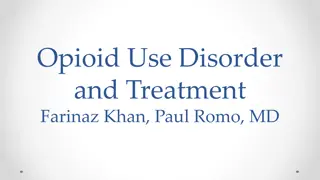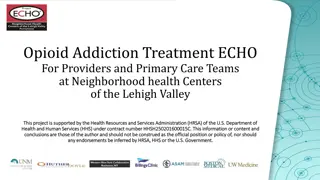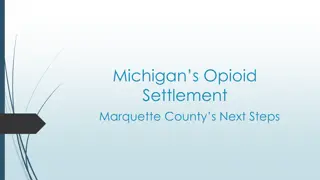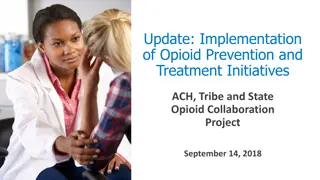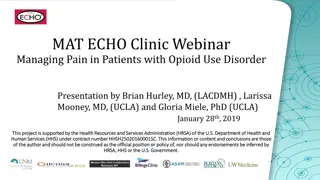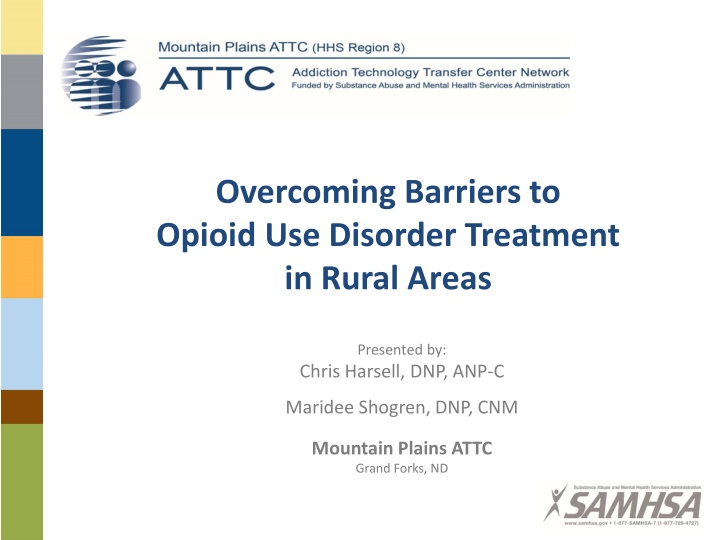
Strategies to Overcome Barriers in Opioid Use Disorder Treatment
Explore strategies to address barriers in rural opioid use disorder treatment, including increasing access to care, addressing stigma, and implementing best practices such as safe prescribing and medication-assisted treatment.
Uploaded on | 3 Views
Download Presentation

Please find below an Image/Link to download the presentation.
The content on the website is provided AS IS for your information and personal use only. It may not be sold, licensed, or shared on other websites without obtaining consent from the author. If you encounter any issues during the download, it is possible that the publisher has removed the file from their server.
You are allowed to download the files provided on this website for personal or commercial use, subject to the condition that they are used lawfully. All files are the property of their respective owners.
The content on the website is provided AS IS for your information and personal use only. It may not be sold, licensed, or shared on other websites without obtaining consent from the author.
E N D
Presentation Transcript
Overcoming Barriers to Opioid Use Disorder Treatment in Rural Areas Presented by: Chris Harsell, DNP, ANP-C Maridee Shogren, DNP, CNM Mountain Plains ATTC Grand Forks, ND
Best Practices Safe prescribing Access to naloxone to prevent overdose deaths Medication Assisted Treatment (MAT) The use of medications and behavioral therapies to treat substance use disorders and prevent opioid overdose.
Barriers to Treating Opioid Use Disorder (OUD) Access Few Providers and Treatment Sites: As rurality increases, the percentage of counties with a psychiatrist or a psychologist diminishes. (NHRA, 2017) Regulatory Issues: Different/varied coverage, prior authorizations Transportation: Lack of public transportation, longer distances to travel Stigma Minimal Privacy: Everyone knows everyone
Strategies to Address Access to Care Increase Number of Treatment Providers Grow the Workforce Access to education (online, distance, employer support) Clinical rotations in rural areas Diversified interprofessional workforce Partnerships and incentives Provide Education and Peer Support ECHO (Extension for Community Healthcare Outcomes) model Telehealth/consultation
Strategies to Address Access to Care Employ Models of Care to Support MAT Practice Based OBOT (Office-based OutpatientTreatment) Integrated Care System Based Hub and Spoke Project ECHO Collaborative Care Nurse Care Manager IP (in-patient) or ED (emergency department) initiation
Stigma Hard-to-treat Cancers SUD
Strategies to Address Stigma Check Personal Bias Person Centered Language Ask Questions Recovery Supports Provide Education Harm Reduction Positive stories of individuals with SUD who are in recovery Addressing Stigma Toolkit: http://attcnetwork.org/regcenters/productDocs/2/Anti-Stigma%20Toolkit.pdf
References Agency for Healthcare Research and Quality (2017). Implementing MAT for OUD in Rural Primary Care: Environmental Scan. AHRQ https://integrationacademy.ahrq.gov/sites/default/files/mat_for_oud_environmental_scan_volume_1_ 1.pdf Chou R, Korthuis PT, Weimer M, Bougatsos C, Blazina I, Zakher B, Grusing S, Devine B, McCarty D. Medication-Assisted Treatment Models of Care for Opioid Use Disorder in Primary Care Settings. Technical Brief No. 28. (Prepared by the Pacific Northwest Evidence-based Practice Center under Contract No. 290-2015-00009-I.) AHRQ Publication No. 16(17)-EHC039-EF. Rockville, MD: Agency for Healthcare Research and Quality. December 2016. www.effectivehealthcare.ahrq.gov/reports/final.cfm. Livingston, J., Milne, T., Fang, M.L., & Amari, E. (2011). The effectiveness of interventions for reducing stigma related to substance use disorders: a systematic review. Addiction, 107(), 39-50. Martin, B. (2007). Building a stronger workforce in rural America. Behavioral Healthcare, 27(8), 32 33. Retrieved from http://ezproxylr.med.und.edu/login?url=https://search-ebscohost- com.ezproxylr.med.und.edu/login.aspx?direct=true&db=aph&AN=26468914&site=ehost- live&custid=s9002706 National Rural Health Association Policy Brief (February, 2017). National Rural Health Association Policy Brief: Treating the Rural Opioid Epidemic. NHRA https://www.ruralhealthweb.org/NRHA/media/Emerge_NRHA/Advocacy/Policy%20documents/Treating -the-Rural-Opioid-Epidemic_Feb-2017_NRHA-Policy-Paper.pdf Substance Abuse and Mental Health Services Administration (2018). Buprenorphine Training for Physicians. https://www.samhsa.gov/medication-assisted-treatment/training-resources/buprenorphine- physician-training

